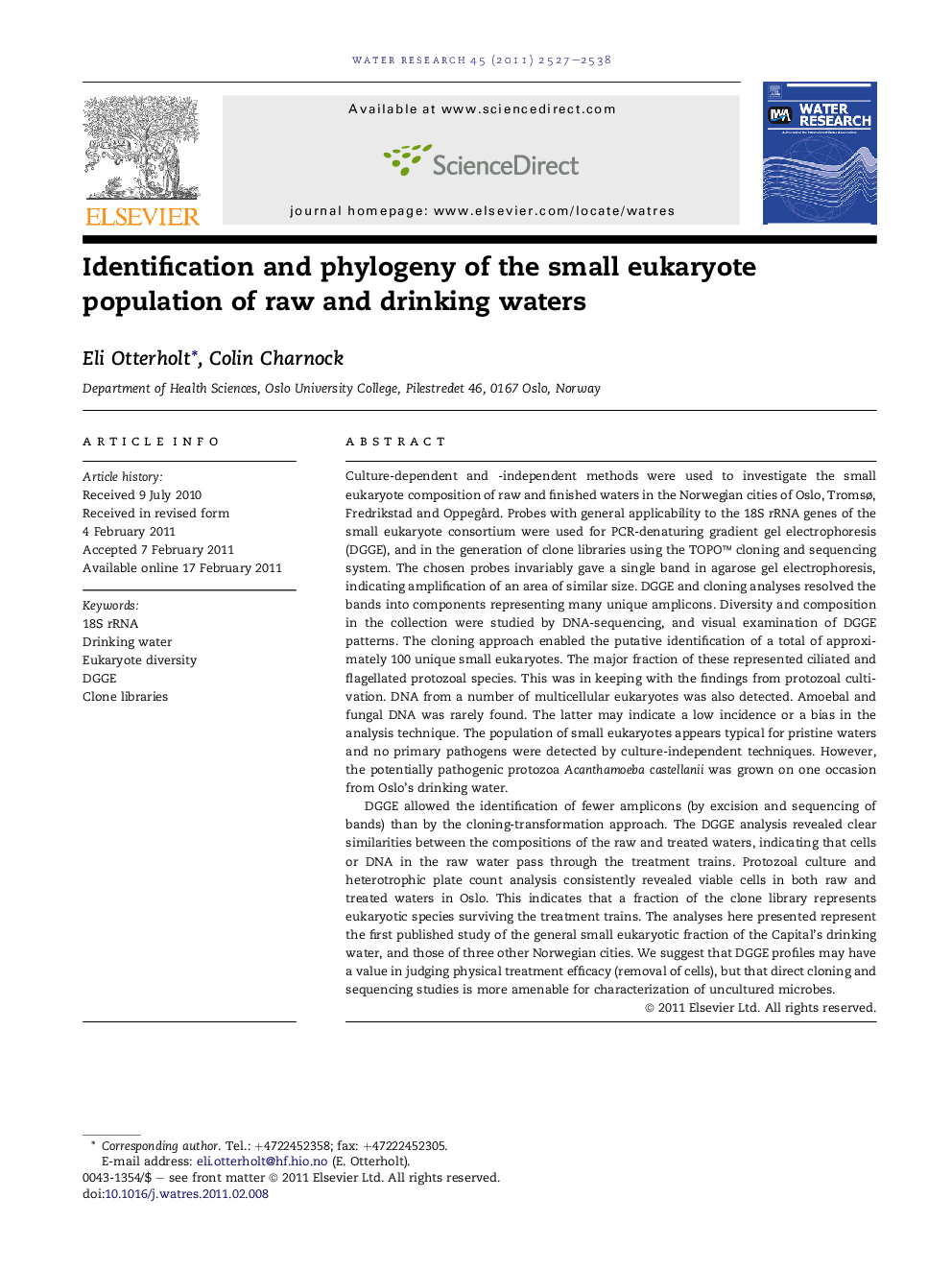| کد مقاله | کد نشریه | سال انتشار | مقاله انگلیسی | نسخه تمام متن |
|---|---|---|---|---|
| 4483577 | 1316892 | 2011 | 12 صفحه PDF | دانلود رایگان |

Culture-dependent and -independent methods were used to investigate the small eukaryote composition of raw and finished waters in the Norwegian cities of Oslo, Tromsø, Fredrikstad and Oppegård. Probes with general applicability to the 18S rRNA genes of the small eukaryote consortium were used for PCR-denaturing gradient gel electrophoresis (DGGE), and in the generation of clone libraries using the TOPO™ cloning and sequencing system. The chosen probes invariably gave a single band in agarose gel electrophoresis, indicating amplification of an area of similar size. DGGE and cloning analyses resolved the bands into components representing many unique amplicons. Diversity and composition in the collection were studied by DNA-sequencing, and visual examination of DGGE patterns. The cloning approach enabled the putative identification of a total of approximately 100 unique small eukaryotes. The major fraction of these represented ciliated and flagellated protozoal species. This was in keeping with the findings from protozoal cultivation. DNA from a number of multicellular eukaryotes was also detected. Amoebal and fungal DNA was rarely found. The latter may indicate a low incidence or a bias in the analysis technique. The population of small eukaryotes appears typical for pristine waters and no primary pathogens were detected by culture-independent techniques. However, the potentially pathogenic protozoa Acanthamoeba castellanii was grown on one occasion from Oslo’s drinking water.DGGE allowed the identification of fewer amplicons (by excision and sequencing of bands) than by the cloning-transformation approach. The DGGE analysis revealed clear similarities between the compositions of the raw and treated waters, indicating that cells or DNA in the raw water pass through the treatment trains. Protozoal culture and heterotrophic plate count analysis consistently revealed viable cells in both raw and treated waters in Oslo. This indicates that a fraction of the clone library represents eukaryotic species surviving the treatment trains. The analyses here presented represent the first published study of the general small eukaryotic fraction of the Capital’s drinking water, and those of three other Norwegian cities. We suggest that DGGE profiles may have a value in judging physical treatment efficacy (removal of cells), but that direct cloning and sequencing studies is more amenable for characterization of uncultured microbes.
► Cultivation and cloning revealed diverse eukaryote communities in Norwegian waters.
► The major fraction of the eukaryote communities represent ciliates and flagellates.
► No primary pathogens were detected by culture-independent techniques.
► The potentially pathogenic Acanthamoeba castellanii was grown from Oslo's drinking water.
► DGGE analysis revealed clear similarities between the raw and treated waters.
Journal: Water Research - Volume 45, Issue 8, April 2011, Pages 2527–2538